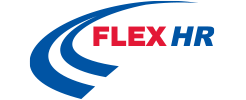How to Comply with the New I-9 Form Requirements and Regulations
As an employer, you are likely familiar with the I-9 form, which verifies an employee’s identity and employment eligibility.
As of August 1, 2023, there’s a new mandated I-9 form, which employers and employees must start using by October 31st. After that date, you will face penalties if you haven’t switched to the new form.
Why the I-9 Form Update?
You might wonder why it was necessary to update the form. Basically, during the pandemic, so many people were hired remotely that the government had to create a way for their documents to be viewed virtually.
The allowance for remote verification of personal documents is now expiring, and all those hired this way will need to have their physical documents examined by the end of August 2023.
Going forward, the USCIS will require physical inspection of all identification documents for the I-9 form, with the exception of those using E-verify.
The form was also changed to make it easier to use and to update the language to make it more in compliance with current DE&I concerns.
Changes to the I-9
The good news is, the new form from the United States Citizenship and Immigration Services (USCIS) is shorter and easier to use. However, there are some key changes you should know.
Some of the more technical changes to the I-9 form include:
- They reduced Sections 1 and 2 to a single-sided sheet by merging multiple fields. Though it looks different, you will need to supply most of the same information.
- They moved the Section 1 Preparer/Translator Certification area to create Supplement A, which is only required when applicable.
- They moved the Section 3 Reverification and Rehire area to create Supplement B, to be used only when applicable.
- In Section 1, they replaced the word “alien” with “noncitizen” and gave further options for “noncitizen national” or “noncitizen authorized to work.”
- The form can now be filled out on tablets and mobile devices, and downloaded more easily, to make it more accessible.
- Updated the notice at the top of the form that explains how to avoid discrimination in the Form I-9 process.
- The List of Acceptable Documents now include some receipts.
- They also updated and reduced the length of the instructions.
As you can tell, most of these changes make the forms easier to use and are more inclusive. Some things that haven’t changed are that both citizens and noncitizen nationals must fill out the form, but independent contractors do not.
Jim Cichanski, Founder & CHRO of Flex HR explains, “these changes greatly reduce the amount of understanding required by your average person to fill out the form. Also, if companies have remote employees, they can use E-verify and a platform like Zoom or Teams to view employee’s documents live virtually.”
How the New I-9 Mandate Affects HR Operations
You will need to have personal documents examined for all employees who had theirs examined virtually, as well as those who are newly hired.
If you complete a Form I-9, and the DHS discovers that an employee you hired is not authorized to work, you are protected by a good faith defense against employer sanctions penalties.
Make sure you have an HR professional or trustworthy individual handling these documents, and legal counsel available should a situation arise.
You may also want to Use E-verify to verify new hires. In fact, some states require it. You’ll need to train those hiring employees how to use E-verify if you want to go this route. If you go that route you MUST do E-verification for all employees.
E-verify will allow you to have them fill out their form and allow you to examine their documentation remotely via a video conference.
When hiring employees, you’ll need to finish filling out (and retaining documentation if you elect to do so) within 3 days of their start date.
You’ll complete section 1 when you hire them, and then section 2 within 3 days of their hire, which requires identification documentation.
If you keep documents, you’ll want a safe place, because of the sensitive information they contain. You also need to have them accessible should the DHS, the U.S. Department of Justice or the U.S. Department of Labor want to inspect them.
If you don’t fill the forms out correctly in a timely manner, you could face penalties that would require you to pay money or face criminal charges.
Integrating the New I-9 Requirements
To integrate the new I-9, make resources available to those in charge of hiring. It should be part of your onboarding process, along with filling out W-2s and the like.
You will need to have those in charge of onboarding trained to make the onboarding process flow well. If you choose to use E-verify, and likely do your onboarding virtually, you could create a video to train them or hold a webinar.
Looking to the Future
Make sure you are keeping up with any updates to the I-9 going forward.
The good thing about E-verify is that it will help many remote businesses keep their current hiring practices, with only a few tweaks.
At Flex HR, we understand how confusing and technical parts of the hiring process like filling out the I-9 are, and we are here to help you seamlessly integrate it to keep your business running smoothly.



